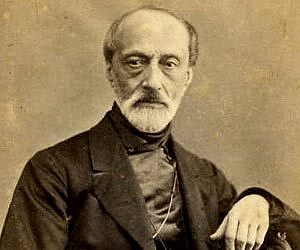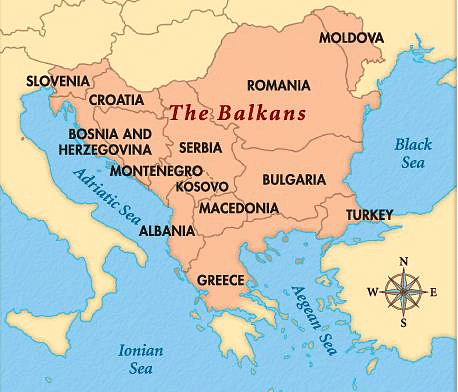Class 10 History Chapter 1 Question Answers - The Rise of Nationalism in Europe
Q 1. What views did Giuseppe Mazzini have about Italy?

- Mazzini believed that God had intended nations to be the natural units of mankind. So Italy could not continue to be a patchwork of small states and kingdoms.
- Italy had to be forged into a single unified republic within a wider alliance of nations. This unification from above could be the basis of Italian unity.
Q 2. What was the reaction to the Napoleonic Code?
- Initially many people welcomed French armies as harbingers of liberty. But the initial enthusiasm soon turned to hostility, as it became clear that the new administrative arrangements did not go hand in hand with political freedom.
- Increased taxation and censorship, forced conscription into the French armies as required to conquer the rest of Europe all seemed to outweigh the advantages of the administrative changes.
Q 3. What kind of life did the aristocrats lead?
- Socially and politically, a landed aristocracy was the dominant class on the European continent. The members of this class were united by a common way of life that cut across regional divisions. They owned estates in the countryside and also townhouses.
- They spoke French for purposes of diplomacy and in high society. Their families were often connected by the ties of marriage. This powerful aristocracy was, however, a numerically small group.
Q 4. What was understood by the term ‘liberalism’?
- The term ‘liberalism’ derives from the Latin root liberal meaning free. For the new middle classes, liberalism stood for freedom for the individual and equality of all before the law. Politically, it emphasized the concept of government by consent.
- Since the French Revolution, liberalism had stood for the end of autocracy and clerical privileges, a constitution and representative government through Parliament. Nineteenth-century liberals also stressed the inviolability of private property.
Q 5. When and why was the Zollverein formed?
- In 1834, a customs union or Zollverein was formed at the initiative of Prussia and joined by most of the German States. The union abolished tariff barriers and reduced the number of currencies from over thirty to two.
- The creation of a network of railways further stimulated mobility, harnessing economic interests to national unification. A wave of economic nationalism strengthened the wider nationalist sentiments growing at the time.
Q 6. How did the Treaty of Vienna (1815) come into being?
- In 1815, representatives of the European powers - Britain, Russia, Prussia and Austria - who had collectively defeated Napoleon, met at Vienna to draw up a settlement for Europe. The Congress was hosted by the Austrian Chancellor Duke Metternich.
Signing of Treaty of Vienna
- The delegates drew up the Treaty of Vienna of 1815 with the object of undoing most of the changes that had come about in Europe during the Napoleonic wars.
Q 7. What was the nature of conservative regimes set up in 1815?
OR
Enumerate any three features of conservative regimes set up in Europe following the defeat of Napoleon in 1815.
- The conservative regimes set up in 1815 were autocratic. They did not tolerate criticism and dissent and sought to curb activities that questioned the legitimacy of autocratic governments.
- Most of them imposed censorship laws to control what was said in newspapers, books, plays and songs and reflected ideas of liberty and freedom associated with the French revolution.
Q 8. What led to the rise of the revolutionaries?
- During the years following 1815, the fear of repression drove many liberal nationalists underground. Secret societies sprang up in many European states to train revolutionaries and spread their ideas.
- To be revolutionary at this time meant a commitment to oppose monarchical forms that had been established after the Vienna Congress and to fight for liberty and freedom. Most of these revolutionaries also saw the creation of nation-states as a necessary part of this struggle for freedom.
Q 9. Write briefly about conditions in Europe in the 1870s.
- By the last quarter of the 19th Century, nationalism did not have its idealistic liberal-democratic sentiment of the first half of the century. Nationalism had become a narrow creed with limited ends.
- Nationalist groups were no longer trusting nor tolerant of each other. They were always at each other’s throats.
- The major European powers manipulated the nationalist aspirations of the
subject people in Europe to further their own imperialist aims.- The most serious source of nationalist tension in 1871 was in the Balkans.
Q 10. What has made the Balkan a source of nationalist tension?
The Balkans
- The most serious source of nationalist tension in Europe after 1871 was the area called the Balkans. The region had geographical and ethnic varieties.
- The Balkans included Romania, Bulgaria, Albania, Greece, Macedonia, Croatia, Bosnia- Herzegovina, Slovenia, Serbia and Montenegro. The inhabitants of the Balkan regions were called Slavs.
- Most of the Balkan region was under Ottoman rule. The spread of the ideas of romantic nationalism in the Balkans, together with the disintegration of the Ottoman Empire, made this region very explosive.
Q 11. How had the female figures become an allegory of the nation during the 19th century in Europe? Analyse.
In the 19th century in Europe, the female figures became an allegory of the nation in the following ways:
- The artists, in the 18th and 19th centuries in Europe, wanted to represent a country, as if it was a person. In other words, they wanted to personify the nation. Nations were represented as female figures. The female form did not belong to any particular woman in real life. It was an abstract idea, which gave the nation a concrete form. The female figure became an allegory of a nation.
- In France, the female form was given the name of Marianne, which represented the nation. Her characteristics were red cap, the tricolour and the cockade, drawn from those of Liberty and the Republic.
- Similarly, Germania became the allegory of the German nation. Germania wears a crown of oak leaves because oak stands for heroism.
Q 12. ‘The decade of 1830 had brought great economic hardships in Europe’. Support the statement with arguments.
- The first half of the nineteenth century saw an increase in population, all over Europe. There was a scarcity of jobs and few employment opportunities.
- Population from rural areas migrated to the cities in search of jobs. They lived in overcrowded slums.
- Small producers in towns faced stiff competition from imports of cheap machine goods from England.
- In those parts of Europe where aristocracy was strong and enjoyed enormous powers, the peasants groaned under the burden of feudal dues and taxation.
- The rise of food prices or a year of bad harvest added to the miseries of the common man.
|
63 videos|445 docs|87 tests
|
FAQs on Class 10 History Chapter 1 Question Answers - The Rise of Nationalism in Europe
| 1. What factors contributed to the rise of nationalism in Europe during the 19th century? |  |
| 2. How did nationalism impact the political landscape of Europe in the 19th century? |  |
| 3. What role did key figures like Giuseppe Mazzini and Otto von Bismarck play in the rise of nationalism in Europe? |  |
| 4. How did the concept of national identity contribute to the rise of nationalism in Europe? |  |
| 5. What were some of the challenges and conflicts that arose as a result of the rise of nationalism in Europe during the 19th century? |  |

|
Explore Courses for Class 10 exam
|

|















